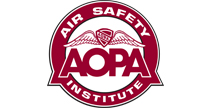Gear down and locked proves fatal
(LAX08FA144)
 By David Kenny
By David Kenny
Mistakes operating retractable gear aircraft cause one or two dozen landing accidents every year. While they’re expensive and embarrassing, the only serious injury is usually to the pilot’s pride, and most of the airplanes are repaired and flown again. There is one situation, though, where the wrong configuration is likely to be deadly, and it happens while landing with the gear down.
On May 17, 2008, two passengers on an amphibious de Havilland DHC-2 Beaver were killed in an accident that bent the airplane’s wings, crushed the cabin roof, and injured the pilot and the other two passengers. It came at the end of a short air-taxi flight—barely half an hour—bringing the passengers and their bags from the paved Lake Chelan Airport outside Chelan, Wash., to the Stehekin Resort near the north end of the lake. Witnesses at the resort saw the airplane set up for what appeared to be a normal water landing, but immediately after touchdown it pitched forward, slammed into the surface of the lake, and rolled inverted. It came to rest with the airplane hanging upside-down underwater, suspended from the floats. The wheels were clearly visible in the extended position.
Wheels-down water landings in amphibians often turn violent; it’s the only type of retractable-gear error with a high fatality rate. For that reason, designers of amphibious floats go to some trouble to make sure the pilot knows the gear position before landing. The accident airplane was equipped with two separate warning systems. Each of the four wheels had two position-indicator lights, a blue one to show that the gear was up and a green light indicating that the gear was down.
It also had a supplemental system that monitored airspeed. When it dropped below a threshold level, the system turned on a “GEAR ADVISORY” light on the instrument panel and provided an audible warning over the airplane’s intercom system: “Gear is up for water landing,” “Gear is down for runway landing,” or “Check gear,” if position indications were inconsistent. The warnings continued until the pilot pushed in the annunciator light, after which the system would re-arm the next time airspeed increased above the threshold. It operated on a separate circuit from the gear retraction system, and could be disarmed by pulling the “Gear Adv.” circuit breaker.
The day of the accident was very hot, and at low altitude the air was bumpy. The pilot, a 5,747-hour ATP with 637 hours in DHC-2s, reported that the airplane never accelerated beyond 95 mph, which he attributed to the heat and load. The bumps caused the gear warning to activate repeatedly. Each time he canceled it before hearing the entire warning, and eventually he pulled the circuit breaker. He recalled reminding himself to reset it during descent, but didn’t remember actually doing so, and the wreckage was found with the breaker open and the gear selector down.
Automatic warning systems can become a nuisance when they don’t know what the pilot is trying to do. Gear-up landings in twins often occur after the gear horn has been disabled during single-engine training. But disabling the warning puts an additional burden on the pilot to remember a task that’s not on the standard checklist—or at the very least, to follow that checklist to the letter. Fatigue makes this even more crucial. The Beaver pilot told investigators that he’d used the written checklist on two previous flights that day, but not on the accident flight. He’d also worked 19 days in a row and thought the lack of time off also may have been a factor. It’s a suggestion that’s hard to dispute.